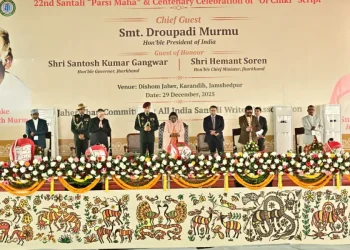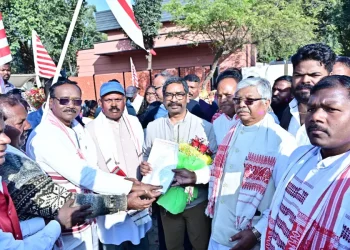Bhubaneswar
In the wee hours of one October morning, 32-year-old Gadaba tribal Basumati of village Bilaguda in Koraput of Odisha went scurrying into the nearby forest. For, she would have to collect some red small wild flowers Girli (Indigo). She would pluck their petals, wash them and then cook them with ‘dal’ to feed her husband and two children with coarse rice. Savouring the mix of ‘dal’ and Girli in the morning meal, her husband would leave for his field where he has sown paddy, and her children would gallop away to the nearby government primary school.
“My farmer husband and two children (one daughter and one son) prefer to relish the mix of dal and Girli in their morning meal. Besides, wild flowers like Girli are readily available in the nearby forest, and I don’t have to rack my brain over what dish I should make for the morning meal,” Basumati tells The Indian Tribal.
Some tribals including Bhumias fry or roast Girli and mingle it with fried rice flour. “We soak the mix in water and add some gur (jaggery) to it for our breakfast,” said Bhumia tribal woman Raimati Ghiyaria (31) of Nauguda village under Kundra block of Koraput district. “There are certain other wild flowers that many tribals pluck and consume their raw petals,” she added.
Basumati is not alone to rely on wild flowers to rustle up recipes, many from Paraja, Gadaba, Kondh and Durua tribes in Koraput district gather about 122 wild plants, roots, fruits and flowers to dish up their indigenous culinary delights.
Over eight wild flowers prominently figure in their kitchen menu. However, five of them — Girli (Indigo), Dhataki (Fire Flame Bush) Kanchana (Mountain Ebony), Muktadei (Gliricidia) and Agasthi (West Indian Pea) — are said to be the most preferred ones that recently came under the microscope of the Central University of Odisha (CUO) in Sunabeda town of Koraput.
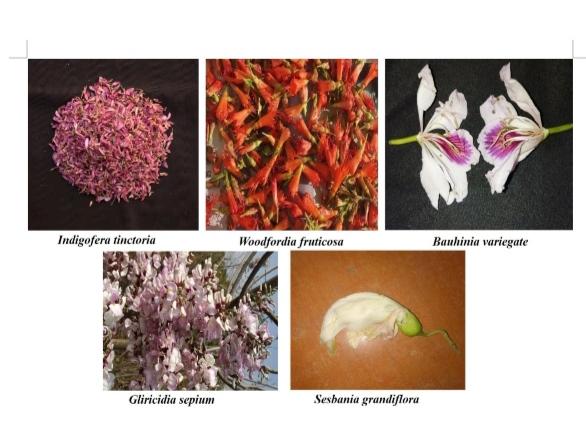
While Girli blossoms between September and October, Dhataki flowers between November and April. On the other hand, Kanchana blooms between February and March. Similarly, the flowering phase of Muktadei varies between February and April and that of Agasthi ranges between December and January.
Dr. Debabrata Panda, Assistant Professor the CUO’s Department of Biodiversity and Conservation of Natural Resources, and his team last year undertook research on the five preferred wild flowers to essay out their nutrient and nutraceutical potential.
“I and my team resorted to 10 parameters prescribed by the American Chemical Association to examine the content of nutrients, vitamins and minerals, and we found them profusely in all five varieties of jungle phula (wild flowers),” Dr. Panda shared with The Indian Tribal.
The research found the potential presence of Vitamin C, Vitamin E, Phenol, Protein, Flavonoid, Fibre and several minerals including fat and carbohydrates that keep tribals fit and fine even during the lean periods of crop production. The energy content in the five wild flowers varies between 49.49 percent and 80. 64 percent (per 100 grams). Flower Agasthi (West Indian Pea) has the highest energy content, according to Dr. Panda.
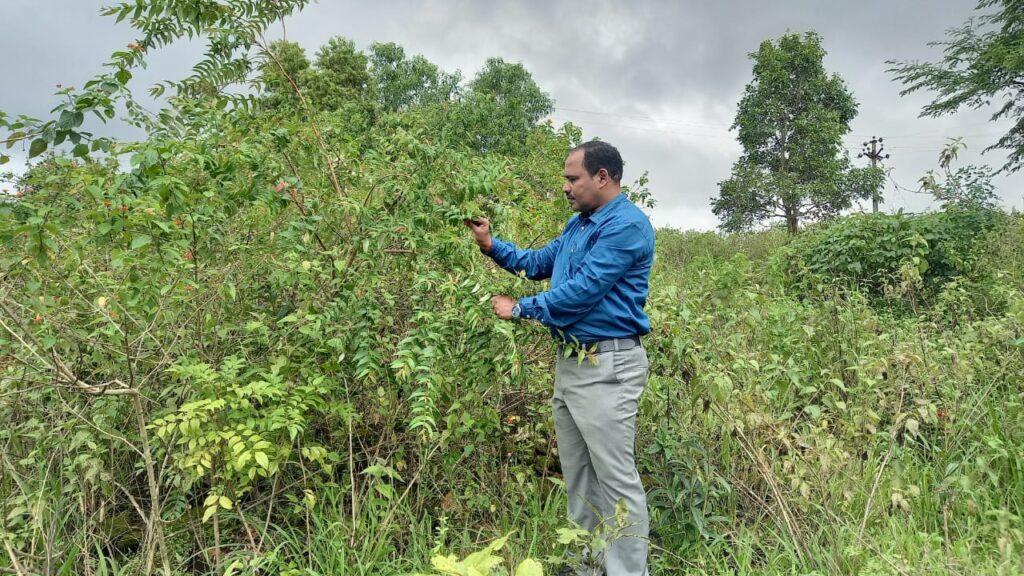
“Most wild flowers are packed with antioxidants that may help protect one against cancer and heart disease. However, an in-depth study should be taken up for their detailed analysis,” Dr. Kartik Lenka, a taxonomist of MS Swaminathan Research Foundation in Jeypore, Koraput, said.
When scientists underline the importance of research for a thorough analysis of the possible presence of medicinal properties in wild flowers, ‘Disaris’’ (traditional healers of tribals) prescribe them as ancillaries along with their main herbal medicines for their patients.
“We lay stress on the intake of Agasthi along with other related medicines, when a patient is afflicted with tuberculosis or bone weakness. Similarly, Kanchana is recommended against Osteoporosis. Several other wild flowers play different roles during the treatment of different diseases,” explained Disari Hari Pangi, Director of Gupteswar Medicine and Traditional Technology Research Centre in village Tentuliguda under Semiligida block of Koraput.
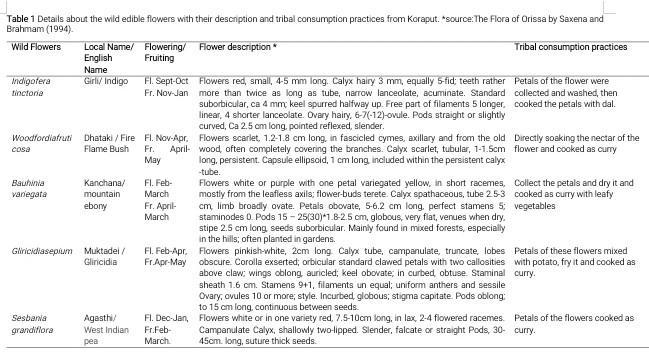
Pangi’s institute was set up about four years ago to conserve and preserve medicinal herbs and plants. It also grows the same in its four acres of land.
However, the wild flowers seem vanishing after several acres have been brought under paddy cultivation and plantation of exotic varieties. Keeping this in mind, Koraput-based noted non-government organization Foundation of Ecological Security (FES) has been afforesting indigenous trees, plants and shrubs that include wild flowers in about 70 villages adjoining Deomali Hill (the highest hill in Odisha) since 2020.
“Even government’s promotion of planting Arabica coffee impinges upon the growth of wild flower plants and shrubs like Agasthi. Most tribals feed on leaves and flowers of Agasthi. Therefore, we have been planting wild yam and Agasthi saplings along with other indigenous plants with the cooperation of the residents of 70 villages,” said FES senior programme manager Pradip Mishra.




















